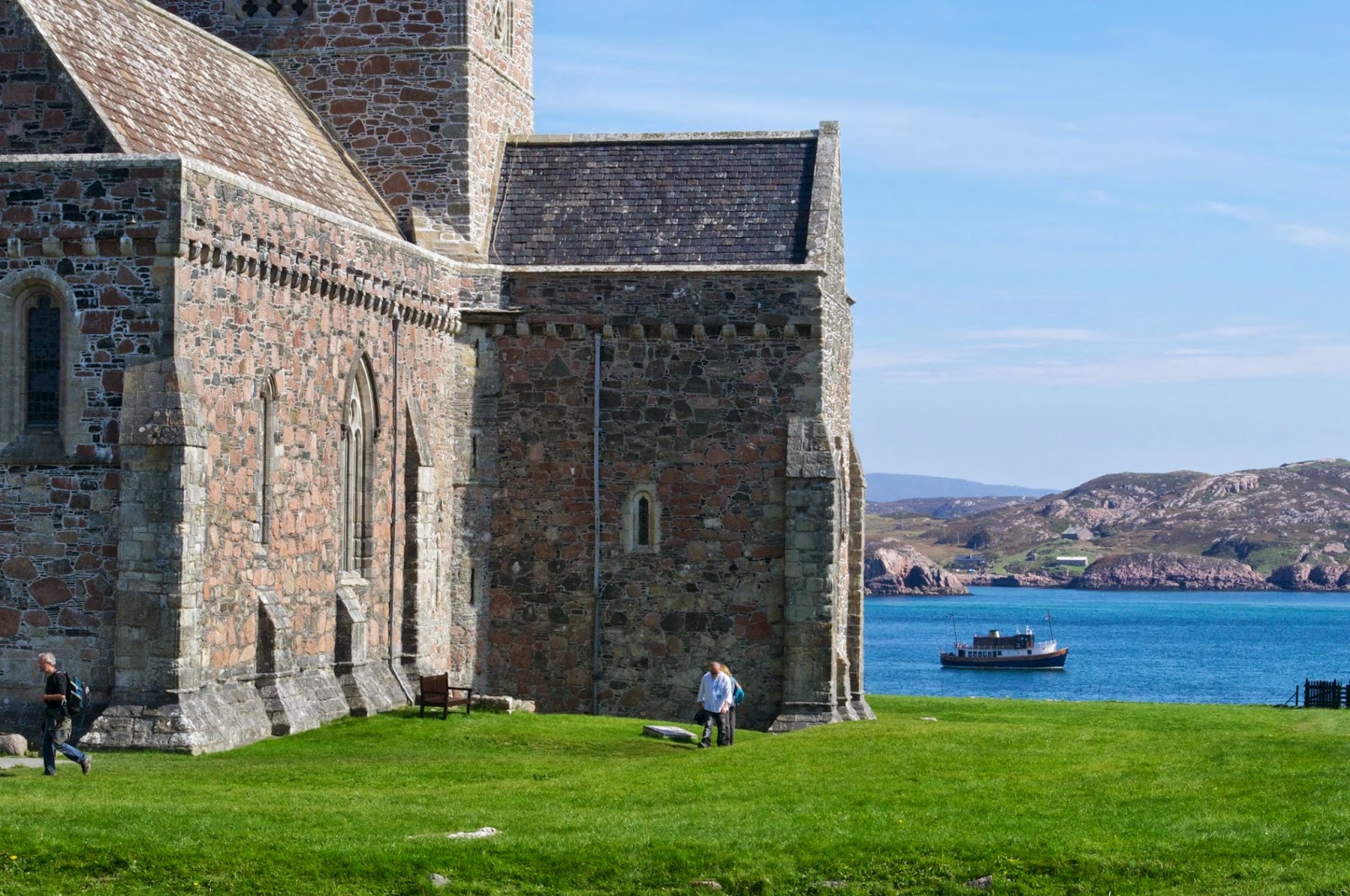 |
| Anchorage off Isle of InchKenneth as the sun rose |
 |
| Iona Abbey from the sea |
The Iona Abbey buildings are about 300m from the jetty up a hill. The complex has been restored as it was when the Benedictines took it over with the abbey church and cloisters
 |
| St. Martin's cross from the 8th century |
 |
| Our ship anchored off the Abbey |
St. Columba landed here from Ireland in 563CE and established the community and we know its layout from a chronicler in the 600s. Repeated Viking raids forced the monks out on several occasions and in the 800s they settled in Kells. In the 1200s the Benedictines took over and rebuilt the monastery and added a nunnery. The Reformation claimed Iona's Abbey and it wasn't restored until the 20th century. In the 1930s, the famed Iona Community was created and since then the sacred site has flourished as a modern place of pilgrimage.
This island on which the community was built is only 3.4 miles long. Outside the abbey visitors can wander the flower-strewn fields, the white sandy beaches with turquoise sea, or the small lanes with a few shops. Iona has been described as "a thin place" where the veil between the material world and the spiritual is like gossamer. It is certainly somewhere that put the hairs up on the back of my neck. I don't have good words to describe the place other than ancient, sacred/holy, and whispers.
 |
| From the top of the modern marble font looking towards the altar down the nave |
The abbey church dates back to the 12th century Benedictine time and is named St. Mary's Cathedral. It is Norman in style with a reconstructed Roman-esque cloister. It's not as large as cathedrals go, more the size of a parish church but it breathes faith. The Iona Community welcome pilgrims for prayer and worship and the living accommodation is on the site of the former monks' cells.
 |
| The Street of the Dead |
After a quick look round the gift shop (good) and the ruins of the nunnery (interesting), we sailed for Bunbessin in Loch na Lathaig to anchor for dinner and the night.
Iona was definitely a bucket-list item I crossed off but four hours was not enough. I would like to come back here and stay for a couple of days and attend the abbey services.
IMAGES: © Photos by Pharos 2014. All rights reserved.

No comments:
Post a Comment